Low BTU air conditioner? Less than 5,000 BTUs?
HU-501708169143
5 years ago
Featured Answer
Sort by:Oldest
Comments (11)
Austin Air Companie
5 years agomike_home
5 years agoRelated Discussions
High BTU Burner - Useful For What?
Comments (25)I love it actually. Really learnt a lot of the fundamentals in cooking. You learn the theory and then you execute it in the kitchen. The best thing I'd say is that you get a lot of diversity and exposure. And the worst thing is probably that culinary school doesn't really fully prepare you for the actual kitchen. There's nothing like working in the industry and learning about it. Actually, I'm more of the proponent of the classical learning method which is practiced mainly overseas in Europe and such; which is through an apprenticeship. BTW, I'm also have a degree in mechanical engineering. Working on a career change. OK, well I have a few more tips that hopefully might help you. Putting out grease fires. Basically never use water. You can place a lid like the other person mentioned to basically suffocate the fire by removing the oxygen. Another method is to sprinkle flour, baking powder, baking soda. Basically that also works by suffocating the fire. ALWAYS remember to turn off the fire as well. Generally, when you sear, saute, or pan-fry. You don't ever want to heat your oil till the point where it smokes. At this point your fat has basically broken down and begin to disintegrate. You'll impart unwanted flavors onto your food. Also, if you continue to heat it long enough, you'll reach the flash point of the oil and it will combust. Bear in mind that it varies for different types of oils. Some oils have flash points very close to the smoking point and some don't. As far as technicality goes, searing basically has very little oil. Just about as much as sauteing goes. Searing however is not a cooking method in itself. It's just a step. Example, you sear a pot roast to seal the juices of the meat inside before braising it in the oven. Pan-fry generally is 1/3 to 1/2 way of the item you're cooking in. Then finally there's deep fry. Temperature is critical whenever you're frying anything. If the oil is too hot, your item will brown before the inside will have a chance to cook. If the oil is too cold, your item will basically soak up all the oil, and you end up with oily and soggy food. You also don't create a good seal on the surface and your juices will leak out. Now as far as types of oils go, peanut oil is the best for deep frying, pan-frying, searing, saute-ing. It's basically an all-around, high smoke-point, neutral flavored oil. Olive oil is not really the best type of oil to use for deep frying. Light pan-frying is OK. Sauteing is OK too. Olive oil is flavored and also have a lower smoking point. Clarified butter is also OK for quick saute-ing (thin food items). Example veal scallopini (where you pound out the veal to thin pieces). If you're unaware of this, clarified is basically butter with the milk solids and whey removed. Heat up the butter gently over the flame. Do not stir it. The milk solids will be at the top, the clarified butter in the middle, and the bottom is whey and water. The milk solids will float to the top when the butter melts. Skim off the milk solids. You will have clarified butter in the middle. The stuff at the bottom is the whey and water. You get about 75% of clarified butter from butter. OK, here's the heads up on BTU/hr ratings etc. There are a few things to keep in mind. Basically the burner element is a heat transfer device. Your pan contacts the burner and is also emitting heat into the environment. You're basically losing heat to the environment. Burner --> Pan --> Environment. The higher BTU/hr rating will allow you to heat the pan up faster and also accommodate for more heat loss. So lets say you have a really thin pan which barely has any thermal mass. You'll have a hard time retaining a high temperature on the pan if your BTU/hr rating is low. Basically thicker pans have more thermal mass. With all other factors being equal, more thermal mass means more heat retained. Now, at the same time, more thermal mass also means it'll take longer to heat up. Also the type of metal comes into play. Copper vs Aluminum vs Stainless Steel. Different metals transfer heat at different rates. So now that you have your pan heated up and it's a good nice and high temperature that you desire. You place a cold piece of meat on it. There's something else that you would have to deal with which is heat recovery. Higher BTU/hr burners will allow you to recover the heat much faster. Also a good heavy gauge pan (like a copper lined pan) will also help because it would have a high thermal mass retaining a lot of the heat. Another factor with good quality pans (generally thicker pans), is that you get even and uniform heating throughout so that you won't have any hot spots. Basically, it's not just one factor (i.e. BTU/hr rating), it's a combination of your pan, technique, etc. BTW, stir fry is done at a really high temperature. It's kind of a spin on sauteing except it's really quick and the temperature is really high. If you've seen it in a restaurant (mainly Chinese cooking I believe), you'll see the burner ring is huge and the wok is basically shaped to contact the flame all over. With the shape of the wok being concaved, I believe there's also a radiant heat effect at play as well concentrating the heat toward the center. I don't know of any residential setup which will allow you to "really cook" on a wok. If you have noticed, stir frys when done right has somewhat of a slight smoky flavor to them. It's hard to explain. It's not so much that it's burnt or like it's a BBQ. It's a distinct smokiness inherent in the high heat cooking. Hopefully this helps =)...See MoreI need help in deciding on a replacement central air conditioner
Comments (21)mike_home, Thanks for the info. I will consider a heat pump. This year the state of new jersey now requires all ac installers to receive training and state licenses in ac installation. In my research it has been stated quite a few times, the ac will work only as well as it was installed. Lennox has premier installers and only a very few of the other brand installers are NATE trained. But the majority are still not ac trained licensed installers. The majority are plumbers and electricians. My concern is the duct work and the refrigerate not being done to specifications. Many hvac contractors offer only one year labor. Unfortunately a number of homeowners found themselves shelving out more money 2,3,4, years later, just for labor. The installer is as important as the ac with 10 year limited warranties. I can accept an annual maintenance contract, but want the ac to work as smoothly as the Luxaire had for 35 years....See More120k BTU or 100k BTU furnace?
Comments (12)Thanks everyone for your input. I think the 3 contractors/dealers are tired of me asking questions. I've decided to go with the Trane system, 5-ton single stage air conditioner 15 SEER, 120k BTU 2-stage variable speed 96% efficient furnace. The HVAC contractors are pretty much the same in this area, the one I signed up with is a big outfit and has good reviews. My house was custom built 23.5 years ago, the Tempstar system was sized for the 2,900 sq' main level (I knew nothing about building a house, there wasn't any HGTV back then). The system has served me well, the current furnace uses a 24" x 24" filter, I think they told me the new one will use a 20" x 25" x 1" filter (will believe it when I see it). The current duct work should do fine, I hope. I had an emergency repair in January when we had an unusual cold spell of 10 degree days for 10 days straight and the exhaust blower died. Cost $891 for the emergency repair (luckily they were able to locate a replacement exhaust blower the next day). The Tempstar dealer was worthless, they told me my furnace is too old, that they don't make those parts anymore and other parts will start to fail too. It was the Trane dealer who did the emergency repair at night and returned the next day with the replacement part (they repair all brands of HVAC). They will be the one to replace my HVAC system. Figured that it's time to have a new HVAC system for peace of mind. 100k BTU furnace supposedly will keep the house at 72 F when temperature is 16 F outside, that the numbers they use for Asheville, NC for sizing the furnace. However, there are days in winter that temperature can dip below 10 F or less, and with climate change you just never know. The 120k BTU 2-stage variable speed with ECM furnace will keep the house above 72 F even if it is 0 F outside (that's what my Tempstar furnace has been doing all these years). Anyway, I put 50% down already, just waiting for the install. This Trane dealer will also cut 2 holes in the main return duct in the lower level to put in 2 returns. The main return and supply lines are both at the ceiling of the lower level, bisecting the length of the finished basement - both lines easily accessible. They will charge me time and material for the 2 "returns", shouldn't take that long to cut 2 holes in the main return duct to insert the return registers....See MoreSimmering and BTU’s on Gas Burners?
Comments (45)Thank you everyone for your help. For the sake of clarity I have had my Bluestar RCS Range since the middle of May 2019. We are now in the middle of September 2019 so I have had the range for 4 months. I have always cleaned the surface with soap and water without issues. It was only when my friend charred peppers and eggplant on the open burners 6 days ago did cleaning become an issue. I tried using gentle methods first to remove burnt on food and grease before I used Easy-Off. I would not categorize myself as an over zealous cleaner. I only used Easy-Off as a last resort. My kitchen is small without much ventilation and I've gotten sick from the fumes given off by Easy-Off in the past. The fumes are hazardous so I only use this cleaner for extreme situations. One of the reasons why I purchased a Bluestar over any other manufacturer was the excellent customer service. I called Bluestar several times before my purchase to ask questions. They were always very helpful and assured me that if I had any issues with my stove to call them and they would immediately fix the issue within the first year warranty period. I trusted them. This was not case when this problem happened. When I first called Bluestar I did have someone explain to me that they had no idea what material the burner heads were made from and what coating was on them. I was told that the burner heads were outsourced and supplied by a third party. This was the first and only time I was able to talk to someone at Bluestar. From then on I repeatedly called, left messages, and no one would call me back. I sent emails with photos and I was blamed immediately for the issue without them hearing me out. This is why I thought it was important to talk to someone on the phone so I could explain myself. Still, no one from Bluestar would return my phone calls. So disappointing, especially considering I thought that I had built a positive rapport with one of the reps. Then I had to get everyone I knew involved, including all of you at houzz. I sent an email to a Bluestar service provider who had helped calibrate my stove after installation. I called the appliance dealer where I bought the stove and talked to the salesman and the front of the office. They were dismayed with this story and were very understanding. They gave me the phone number of the Bluestar rep in the NYC area who supplies the appliance dealership. This is where things turned around for the better. The Bluestar rep called me back and, for the first time, I was able to have a conversation with Bluestar about my issue. I was quite lucky to talk to him because he too has the exact same model of stove in his own apartment. He acknowledged that he had no idea what the burner heads were made from nor what coating was on them. He also said that he never thought about it before because he just never cleans his burner heads. We had a laugh. : ) He then read the Use and Care Manual and agreed with me that any normal consumer would assume that the "burner rings" (because it's a ring shaped burner) in the manual referred to the "burner head" on my range but he said the the burner rings mentioned in the manual referred to the open burner model range not my sealed burner range. He admitted that there is no care instructions for the sealed burner heads in the manual. He then went to bat for me. He talked to the head supervisor at the Bluestar service department and, indeed, they agreed to replace all of my burners and igniters free of charge, labor included. Whew! I am so relieved that I did not have to go the legal route and drag this issue forward. Furthermore, this Bluestar rep who helped me did some investigation about the burners. Well, it turns out that the burners are made from aluminum. Neither he nor the supervisor at the service department can determine what the coating is on the burner heads. It's odd because Easy-Off turned that silver coating to a sludgy, goopy, clogging mess. I have removed galvenized coatings from sheet pans before and it didn't goop up like the burner heads did. This is why I initially thought that that burner heads were painted. I would think that the burner heads on any range are among the most important parts but it seems to me that Bluestar's choice of burner heads for their RCS range was an after thought. Today when the Bluestar rep talked to me about the burner heads he agreed that the burner heads needed overhauled. He had a conversation with the supervisor about manufacturing better burner heads in the future and he had hope that Bluestar would do this. Unfortunately it's not going to help my case now. The Bluestar rep also said that Bluestar is going to immediately update their Use and Care Manual to address the care of the burner heads for their sealed burner ranges. This will be a big help. I also addressed the importance of upgrading their sealed burner head design as soon as possible. There are going to be many consumers of this stove who will blindly do what I did to clean the burner heads. For better and for worse Easy-Off is an intuitive cleaner to use for baked on food and grease on stoves and this could be a nightmare for Bluestar going forward. Again, the Bluestar rep acknowledged my concerns and agreed that the current burner heads need replacing. I suggested solid brass or 303 stainless steel. ( M- please feel free to weigh in here.) "A lot of traditional ranges use aluminum burners. Unlike brass, aluminum has a low melting point (around 1200F), so they tend to warp and deform over time. Aluminum absorbs heat faster because it's less dense than brass, but it doesn't retain the heat for a long time. This means that the temperature drops down much faster with aluminum burners than with brass burners. This fact may be appealing to those with children or those who want faster burner cooling times. Additionally, aluminum burners are less corrosion resistant and have a shorter lifespan as compared to brass burners." At least I have a solution. Would I have bought the Bluestar RCS Sealed Burner Range had I known that the burners were made from aluminum with a yet-to-be-determined coating on them? No. I remember several other manufactures with solid brass and solid stainless steel burner heads that were superior to Bluestar's burner heads but other flaws, like cooling fans, kept me away from those other manufacturers. Maybe going forward I could figure out a way to CNC the burner heads from Bluestar out of solid brass. (It would void my warranty, however.) That would raise the quality of my stove to what I expected it to be in the first place. Also, I planned on writing a review of my Bluestar Range and was going to give it 4 out of 5 stars. Based on my experience with this range and with Bluestar's customer service I just can't recommend the Bluestar RCS Sealed Burner Range to anyone at this point....See Moremike_home
5 years agolast modified: 5 years agoAustin Air Companie
5 years agomtvhike
5 years agoAustin Air Companie
5 years agomike_home
5 years agomtvhike
5 years agomike_home
5 years agoDan East
2 years ago
Related Stories
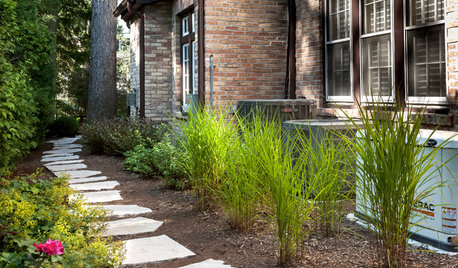
MOST POPULAR5 Ways to Hide That Big Air Conditioner in Your Yard
Don’t sweat that boxy A/C unit. Here’s how to place it out of sight and out of mind
Full Story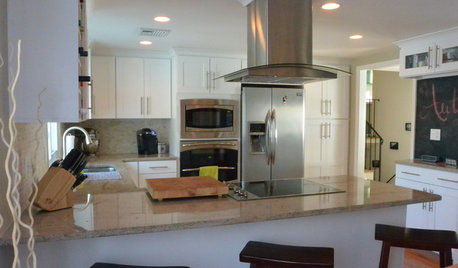
BEFORE AND AFTERSA ‘Brady Bunch’ Kitchen Overhaul for Less Than $25,000
Homeowners say goodbye to avocado-colored appliances and orange-brown cabinets and hello to a bright new way of cooking
Full Story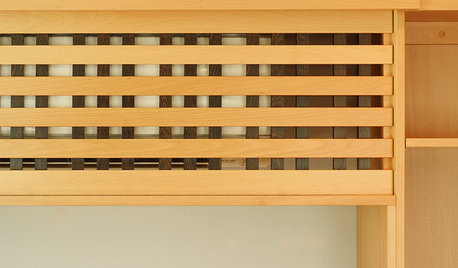
DECORATING GUIDES10 Ways to Hide That Air Conditioner
Feeling boxed in designing around your mini-split air conditioner? Try one of these clever disguises and distractions
Full Story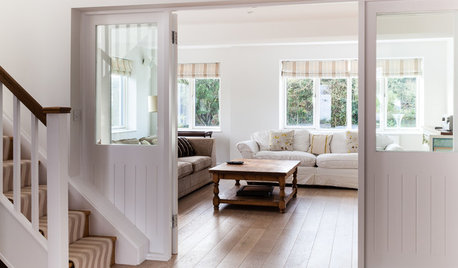
BUDGET DECORATING9 Tricks to Boost Your Home’s Appeal for Less Than $400
Whether you’re redecorating or just doing a quick update, check out these ways to enhance your home on a budget
Full Story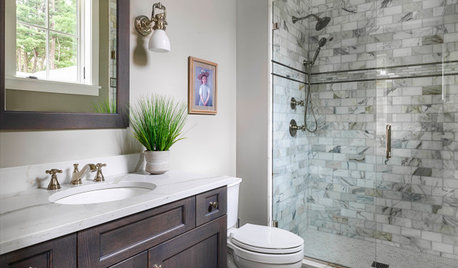
BATHROOM DESIGNNew This Week: 5 Bathrooms With a Curbless or Low-Curb Shower
Design pros, including one found on Houzz, share how they handled the shower entrances and other details in these rooms
Full Story
SMALL HOMES28 Great Homes Smaller Than 1,000 Square Feet
See how the right layout, furniture and mind-set can lead to comfortable living in any size of home
Full Story
FEEL-GOOD HOME9 Ways to Boost Your Home’s Appeal for Less Than $75
Whether you’re selling your home or just looking to freshen it up, check out these inexpensive ways to transform it
Full Story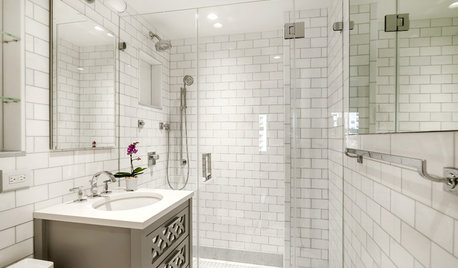
BATHROOM WORKBOOK5 Ways With a 5-by-8-Foot Bathroom
Look to these bathroom makeovers to learn about budgets, special features, splurges, bargains and more
Full Story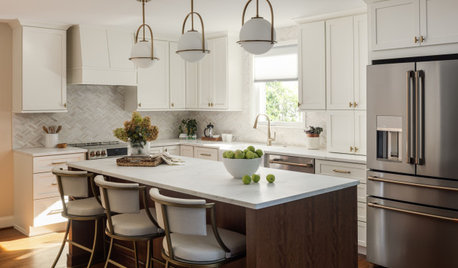
MOST POPULAR5 Remodels That Make Good Resale Value Sense — and 5 That Don’t
Find out which projects offer the best return on your investment dollars
Full Story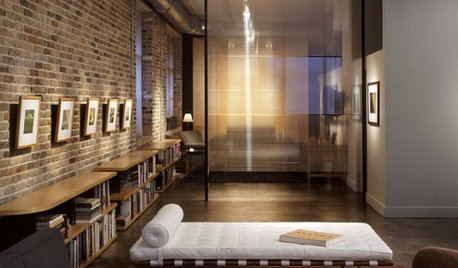
MATERIALSMaterials Workshop: Polycarbonate — a Low-Cost Alternative to Glass
Looking for something lighter, stronger and less expensive than glass? Multiwall polycarbonate may be a good option
Full Story



HU-501708169143Original Author